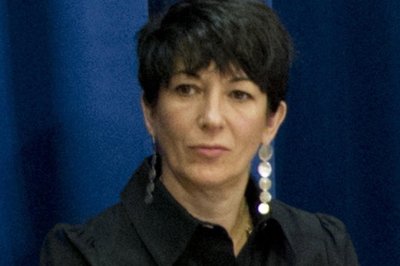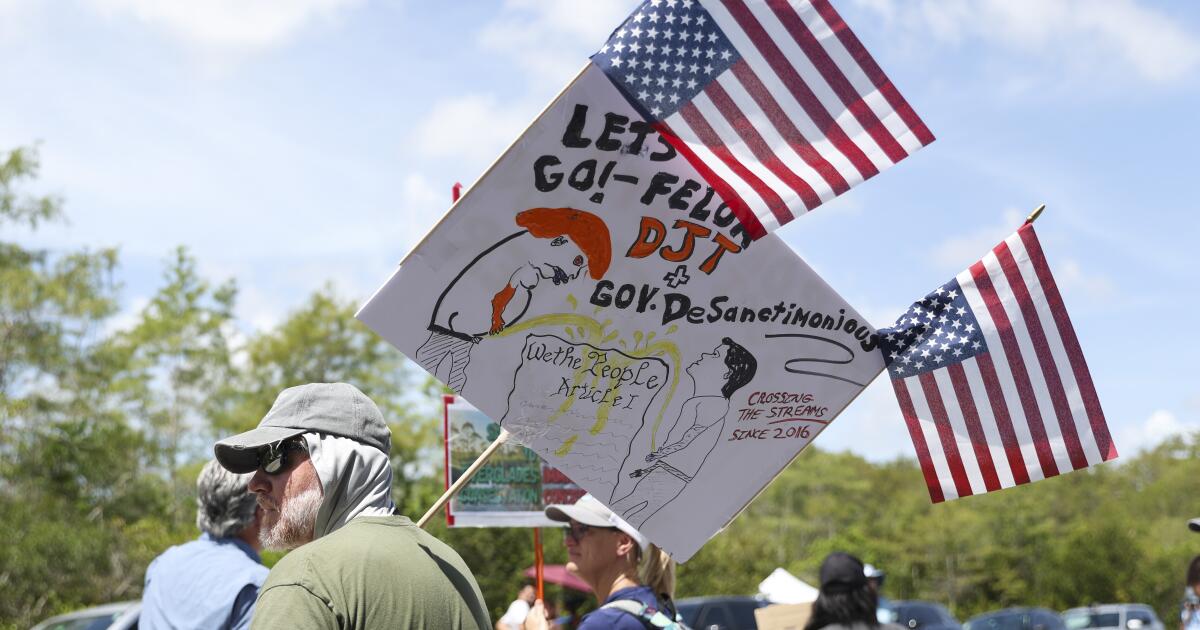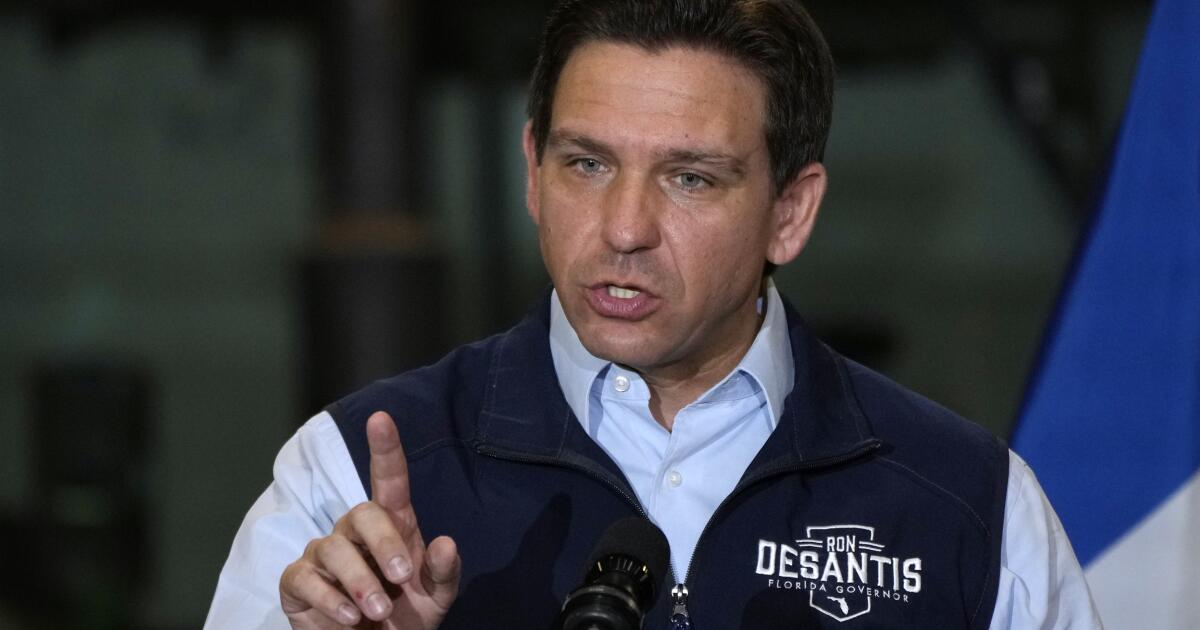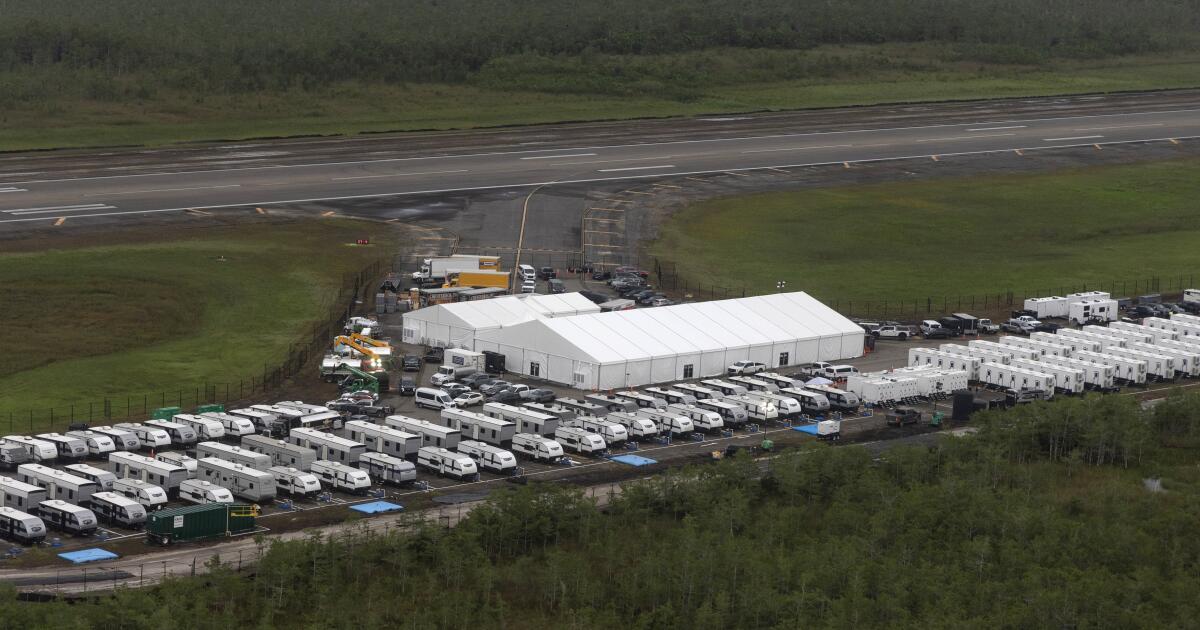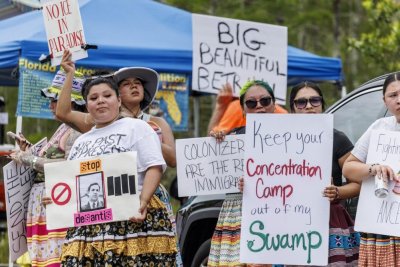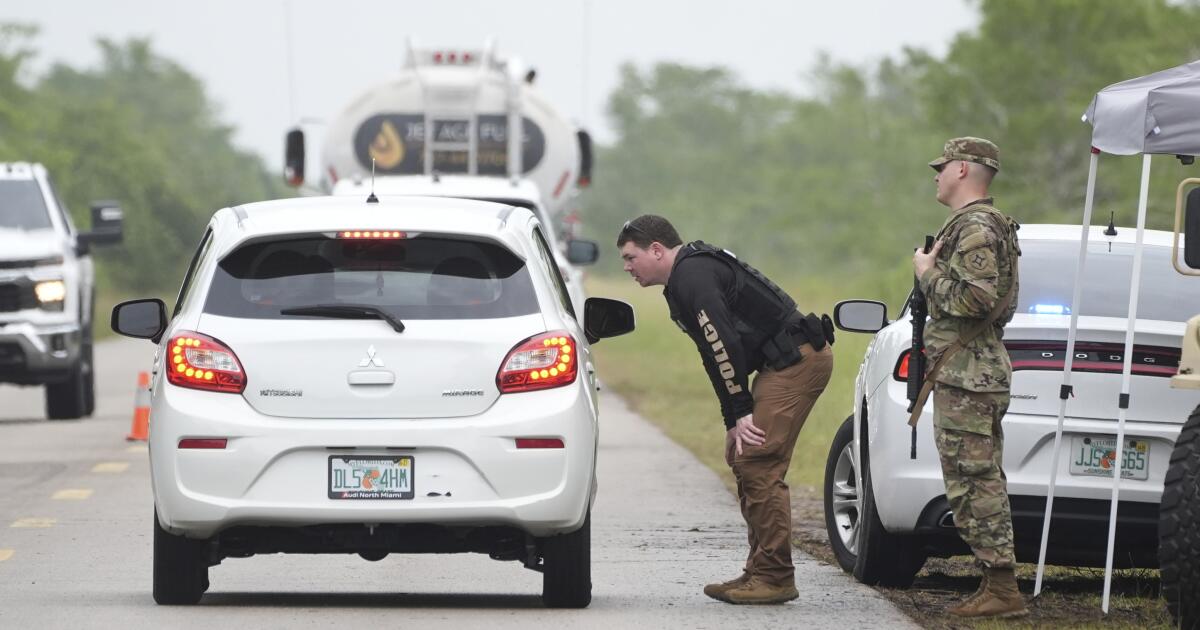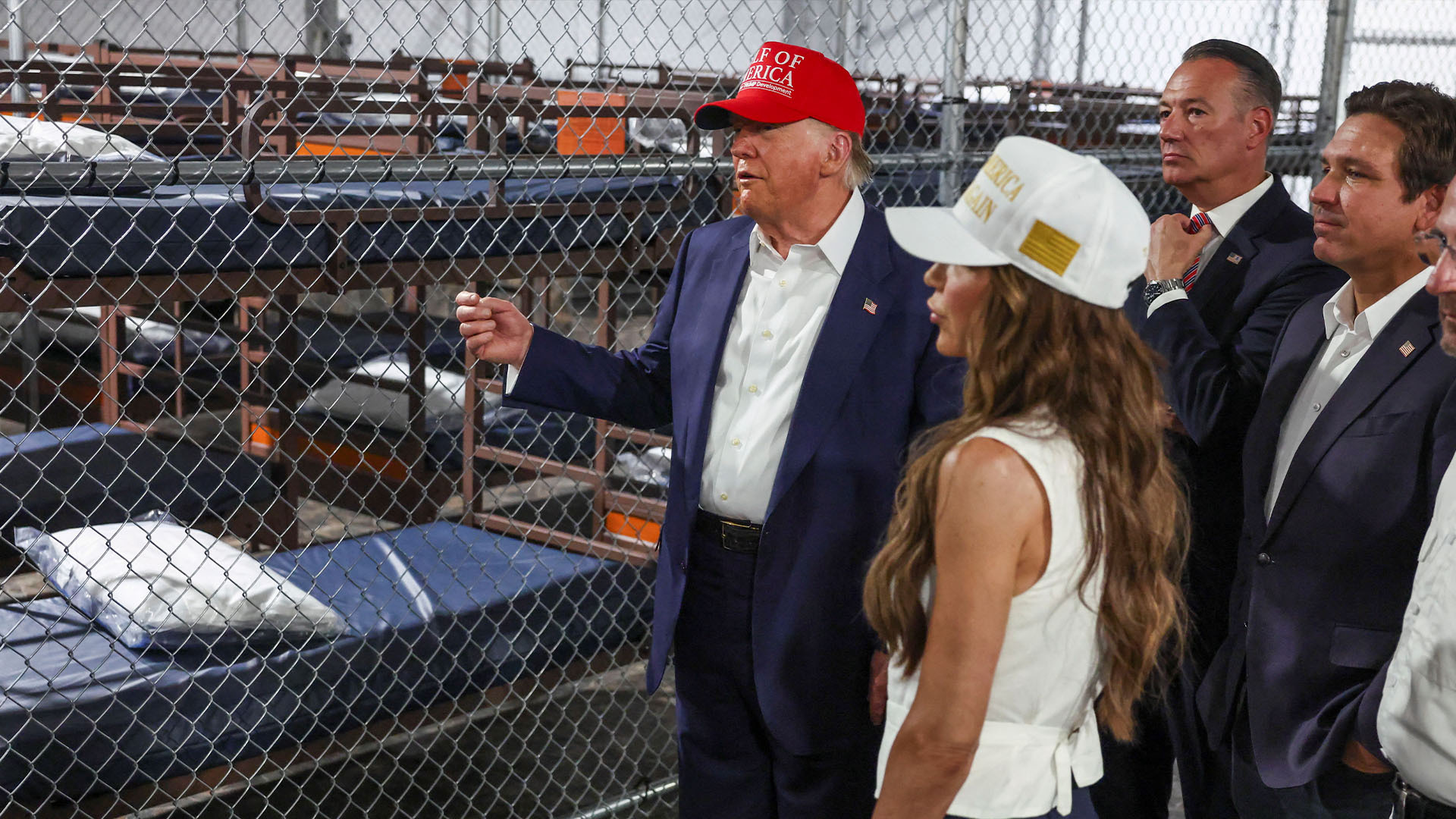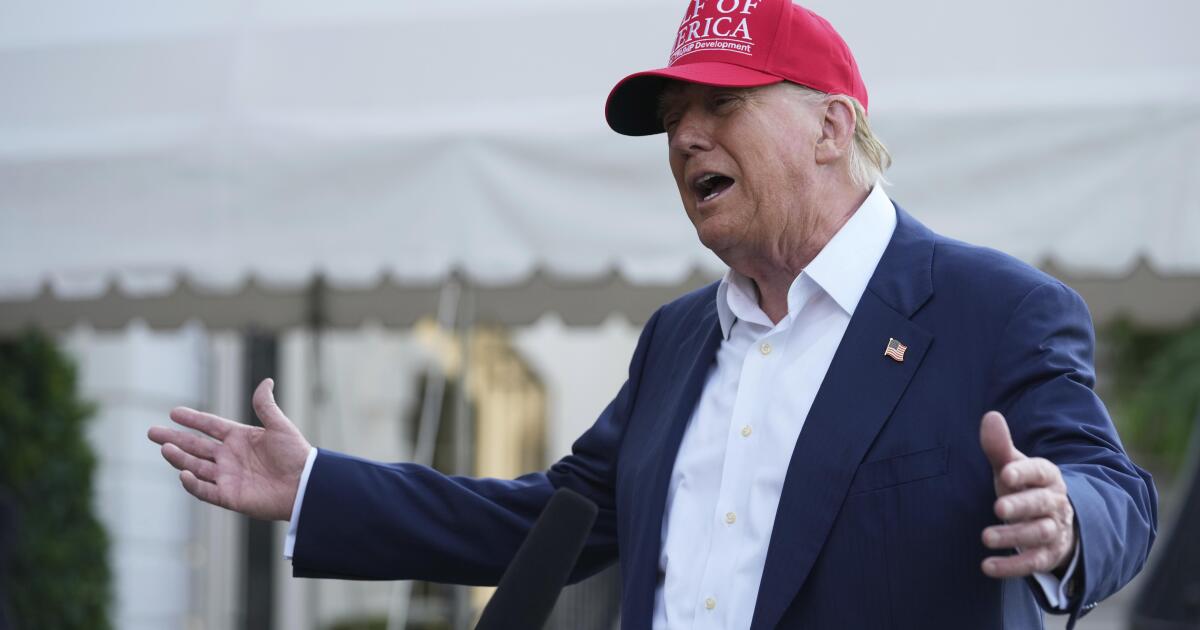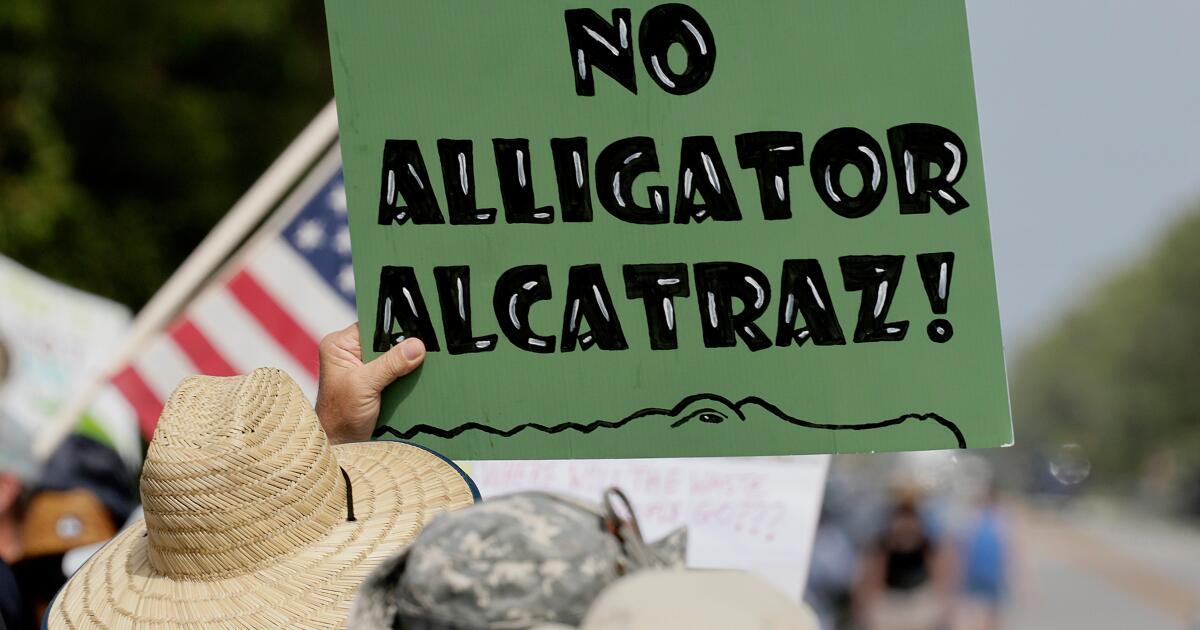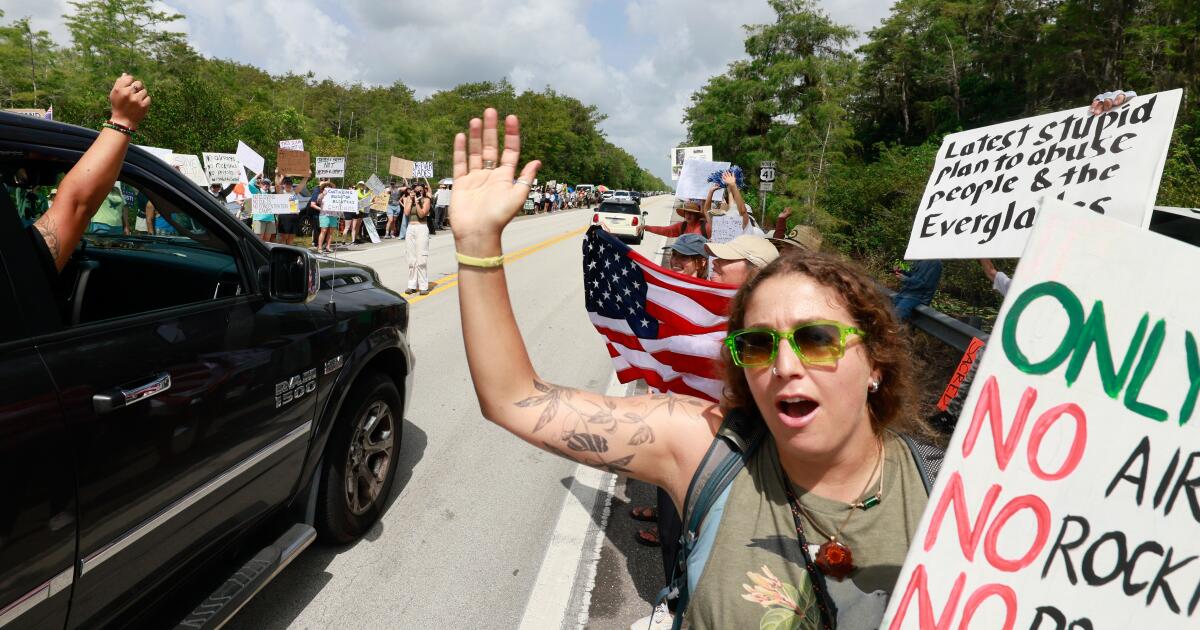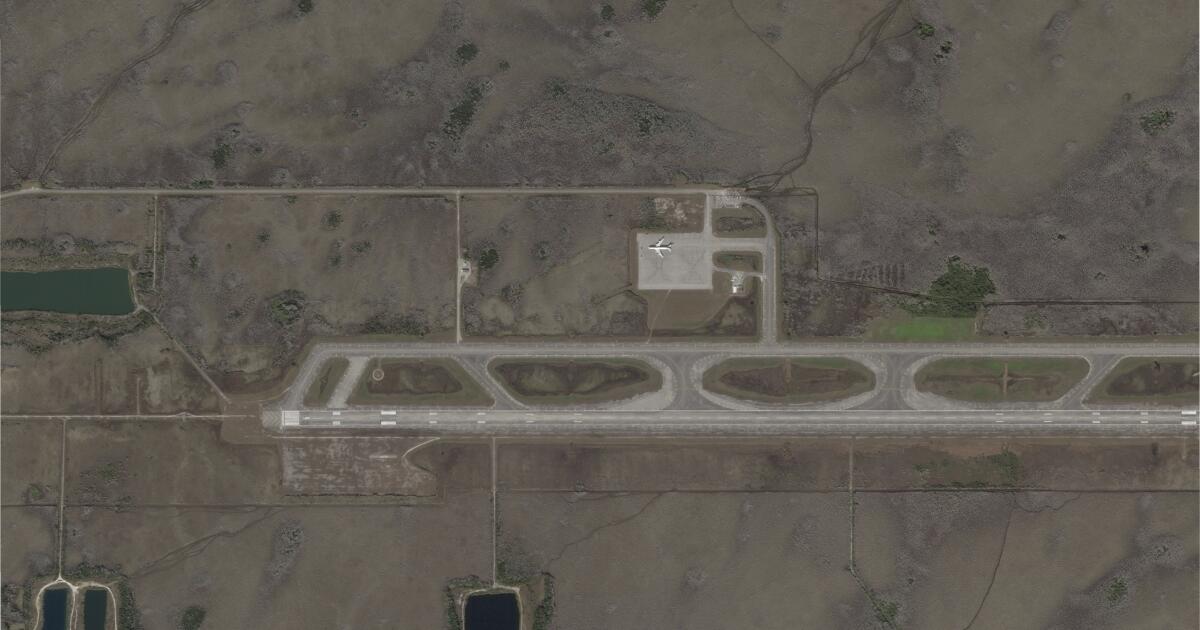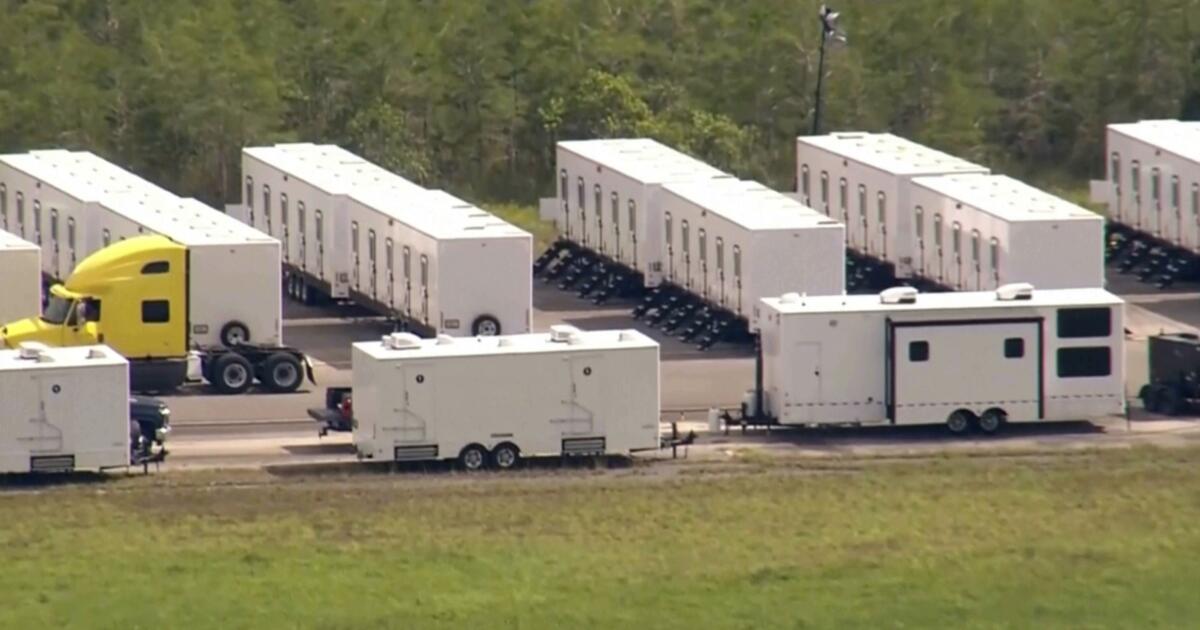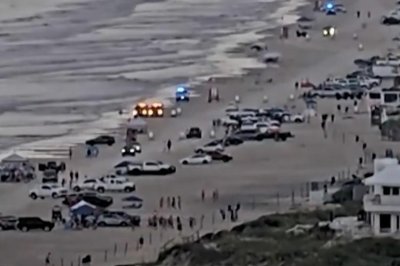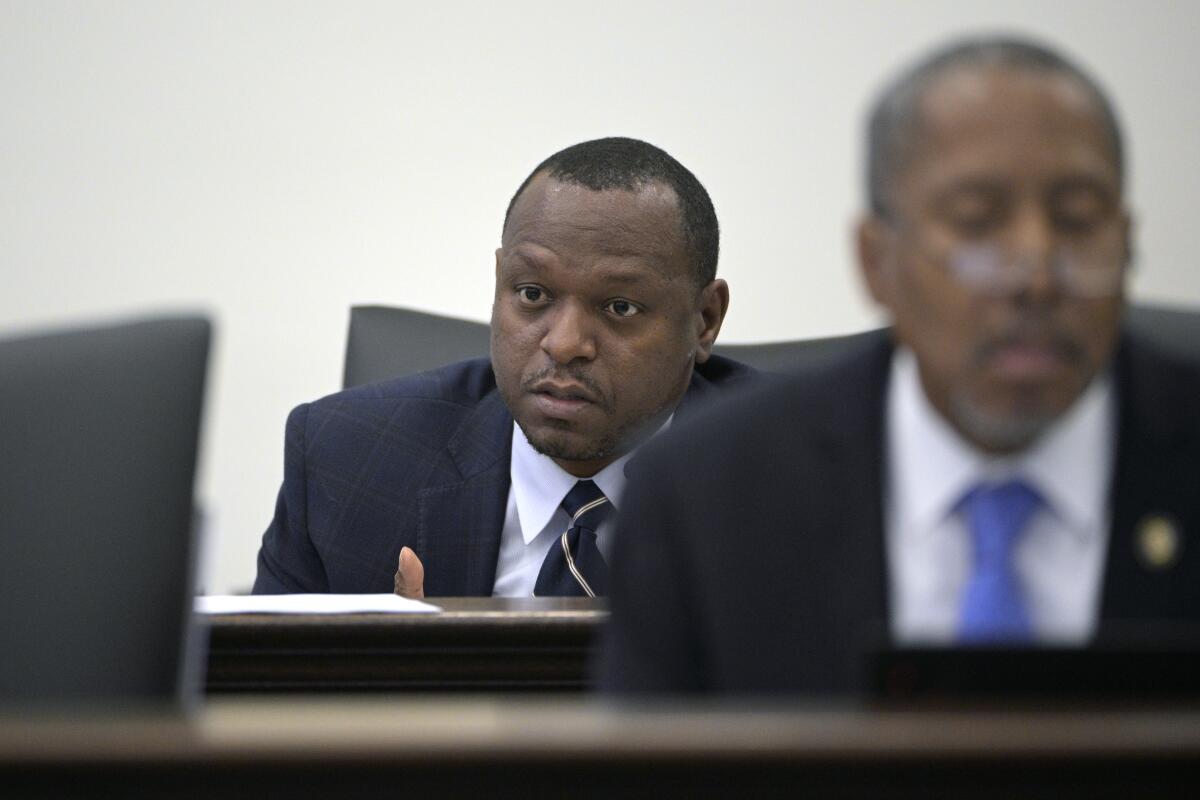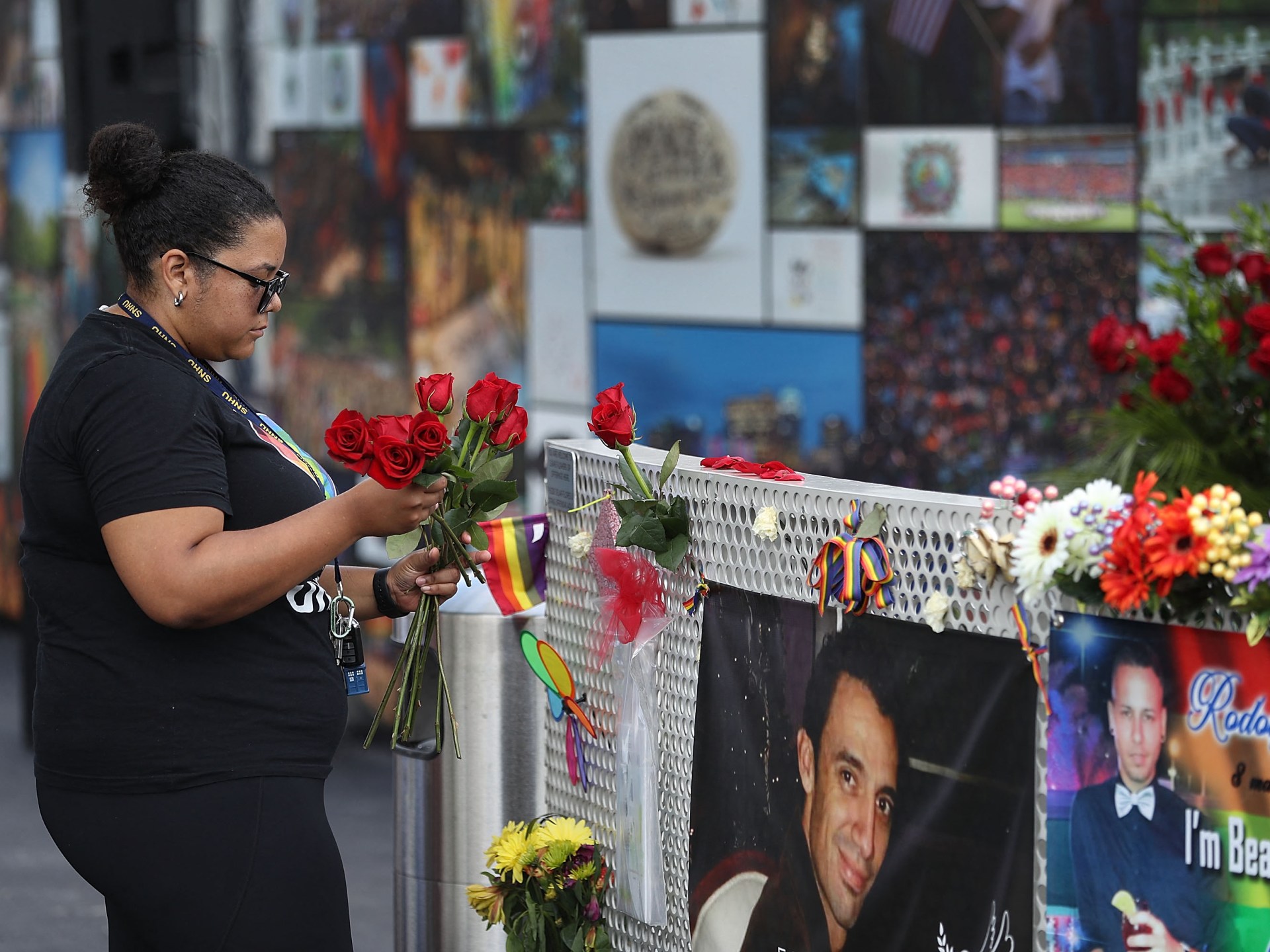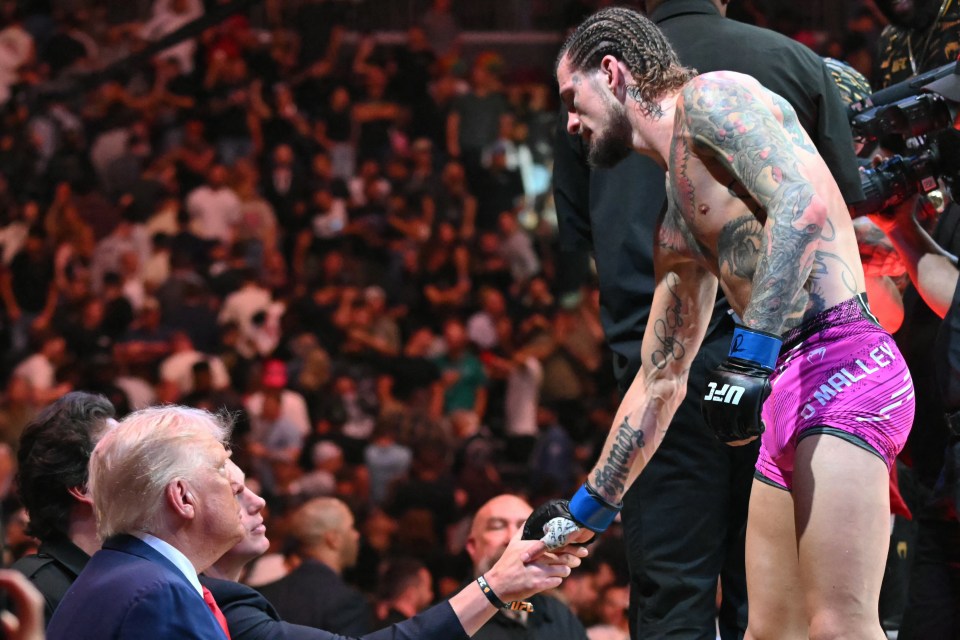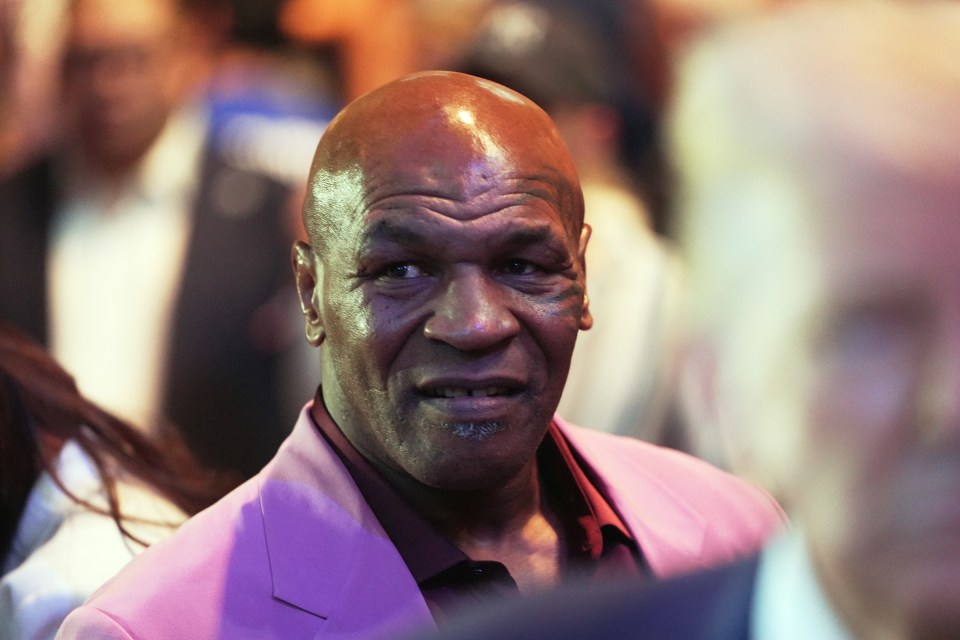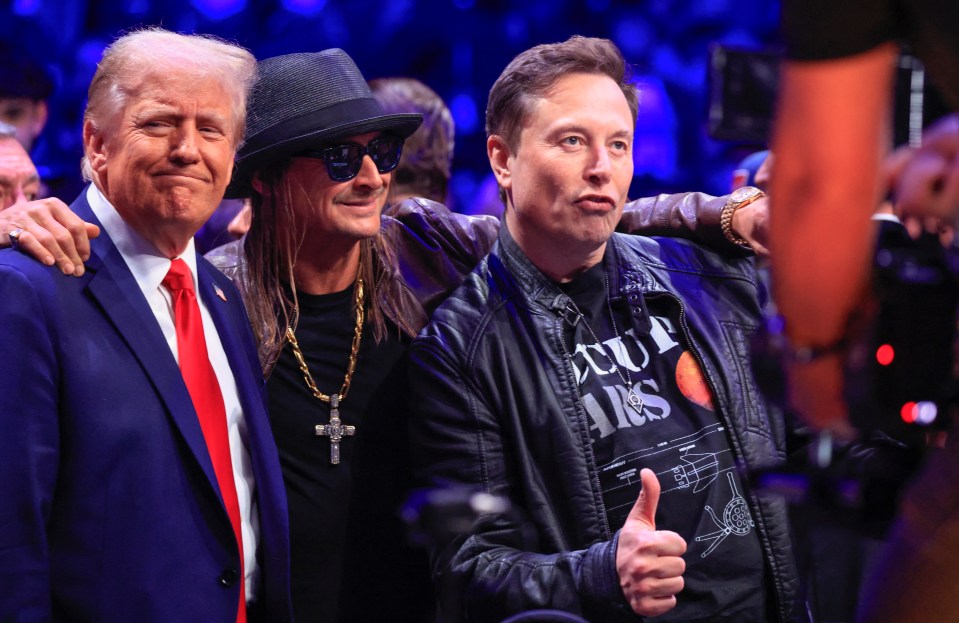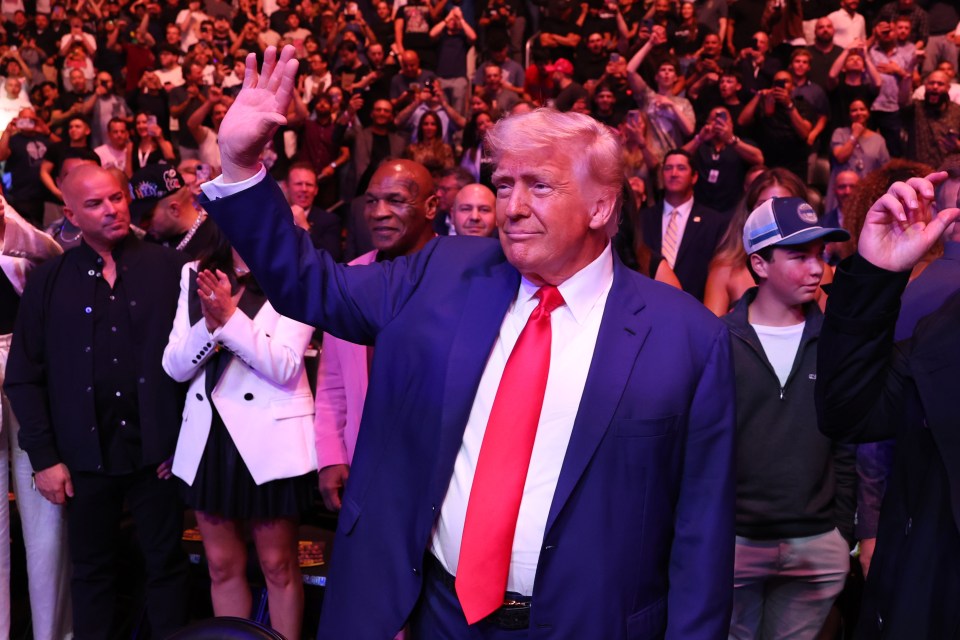OCHOPEE, Fla. — President Trump will turn a new immigration detention center in a remote area of the Florida Everglades into a symbol of his border crackdown when he visits on Tuesday.
The facility, assembled on a remote airstrip with tents and trailers that are normally used after a natural disaster, has been given the nickname “Alligator Alcatraz,” a moniker that has alarmed immigrant activists but appeals to the Republican president’s aggressive approach to deportations.
“This is not a nice business,” Trump said while leaving the White House in the morning. Then he joked that “we’re going to teach them how to run away from an alligator if they escape prison.”
“Don’t run in a straight line. Run like this,” he said, as he moved his hand in a zigzag motion. “And you know what? Your chances go up about 1%.”
That doesn’t seem to be sound advice, though. It’s best to dash in one direction in the rare situation when an alligator gives chase, according to a website run by the University of Florida.
Ahead of Trump’s arrival, local authorities were positioned by the entrance of the airstrip. Media vans and other vehicles were parked along the highway lined by cypress trees.
Protestors have often gathered near the facility, which is about 50 miles west of Miami and could house 5,000 detainees. They’ve criticized the potential impact on a delicate ecosystem and say Trump is trying to send a cruel message to immigrants — while some Native American leaders have also opposed construction, saying the land is sacred.
“I have a lot of immigrants I have been working with. They are fine people. They do not deserve to be incarcerated here,” said Phyllis Andrews, a retired teacher who drove from Naples, Florida, to protest Trump’s visit on Tuesday. “It’s terrible that there’s a bounty on their head.”
The president’s supporters showed up as well. One wore a hat saying, “Trump was right about everything.”
A key selling point for the Trump administration is the site’s remoteness — and the fact that it is in swampland filled with mosquitoes, pythons and alligators. The White House hopes that conveys a message to detainees and the rest of the world that repercussions will be severe if the immigration laws of the United States are not followed.
“There’s only one road leading in, and the only way out is a one-way flight,” press secretary Karoline Leavitt said Monday. “It is isolated, and it is surrounded by dangerous wildlife and unforgiving terrain.”
Crackdowns on the U.S.-Mexico border and harsh immigration policies have long been a centerpiece of Trump’s political brand.
During his first term in 2019, Trump denied reports that he floated the idea of building a moat filled with alligators at the southern border. “I may be tough on Border Security, but not that tough,” he said at the time.
In his second term, Trump has suggested that his administration could move to reopen Alcatraz, the notorious and hard-to-reach island prison off San Francisco. The White House has similarly promoted the political shock value of sending some immigrants awaiting deportation from the U.S. to a detention lockup in Guantánamo Bay, Cuba, and others to a megaprison in El Salvador.
Some of the ideas have been impractical. For example, transforming Alcatraz from a tourist attraction into a prison would be very costly, and Guantánamo Bay is being used less often than administration officials originally envisioned.
However, the new detention center in the Everglades came together very quickly. Homeland Security Secretary Kristi Noem recently told the Associated Press that she felt some contractors were charging the government too much to run facilities, “so I went directly to states and to ask them if they could do a better job providing this service.”
Florida officials “were willing to build it and do it much quicker than what some of the other vendors were,” she said. “And it was a real solution that we’ll be able to utilize if we need to.”
Former U.S. Rep. David Jolly of Florida, a former Republican who is now running for governor as a Democrat, called the facility a “callous political stunt.”
U.S. Immigration and Customs Enforcement detainees are generally held for reasons like entering the country illegally or overstaying a visa. They are either waiting for ICE to put them on the next flight or bus ride home, or they’re fighting their removal in immigration court.
If an immigrant is accused of or has committed a violent crime, he or she is tried and held in state or federal criminal jurisdiction, separate from the immigration system. In those cases, they may be transferred to ICE for deportation after completing their criminal sentences.
State officials are spearheading construction of the Florida facility, but much of the cost is being covered by the Federal Emergency Management Agency, which is best known for responding to hurricanes and other natural disasters.
Florida Attorney General James Uthmeier, whom Homeland Security Secretary Kristi Noem has credited as the architect of the Everglades plan, first debuted the proposal with a slickly produced video, complete with custom graphics featuring red-eyed alligators and a hard rock soundtrack.
The Department of Homeland Security posted an image of alligators wearing ICE hats and sitting in front of a fenced-in compound ringed with barbed wire.
The Florida Republican Party has fundraised off the facility, selling branded T-shirts and beverage container sleeves. Florida Gov. Ron DeSantis suggested Monday that the facility would be open and “ready for business” by the time Trump arrives.
The governor, who challenged Trump for the 2024 Republican presidential nomination, has also played up the fact that the site will be hard to escape from.
“They ain’t going anywhere once they’re there, unless you want them to go somewhere, because good luck getting to civilization,” DeSantis said. “So the security is amazing.”
Licon and Weissert write for the Associated Press. Weissert reported from Washington. AP writers Kate Payne in Tallahassee, Fla., Elliot Spagat in San Diego and Chris Megerian in Washington contributed to this report.

